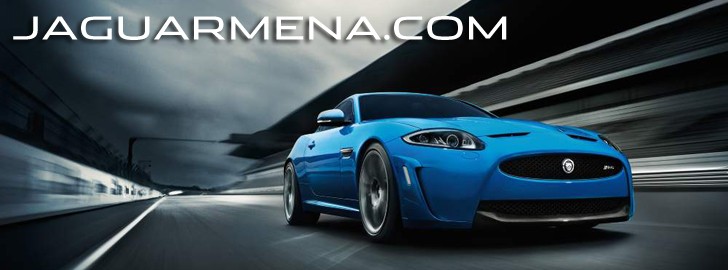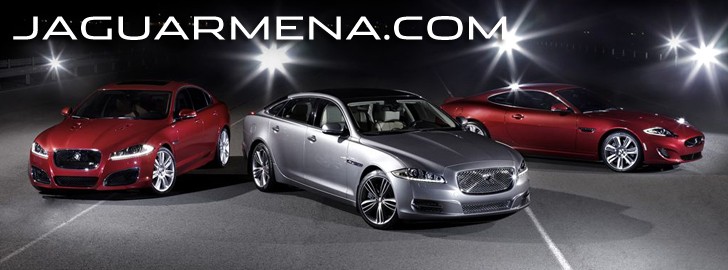Jaguar 2013 Model Year XF And XJ | Powertrain Introduction
Having introduced a host of new technologies for the 2012 Model Year and following the two new highly-efficient forced induction petrol engines announced earlier in the year, Jaguar is once again broadening its global product offering and improving customer choice with its 2013MY XF and XJ ranges.
The acclaimed eight-speed ZF automatic transmission is now made standard across the entire XJ and XF range for all powerplants.
Eight-speed transmission
The eight-speed ZF transmission is now extended across the entire XF and XJ ranges for the 2013MY offering better economy, reduced emissions and smoother acceleration compared to the previous six-speed equipped models.
For all installations the transmission’s operating software has been specifically tuned to ensure it perfectly matches the power delivery of the engines to which it is mated and offers the sporting feel, precision and smooth shifting expected of a Jaguar.
With both a wider spread of ratios and more even spacing between them, the gearbox provides more seamless acceleration both from rest and when overtaking, while fuel consumption at high speeds is reduced. Gearshifts are executed in just 200 milliseconds while driver intervention is possible through the use of steering wheel-mounted paddleshifts which allow multiple downshifts, allowing the desired gear to be selected almost instantaneously.
The use of lightweight, compact components including a rear differential with an aluminium casing means there is no weight or packaging penalty when compared with the outgoing six-speed models, while efficiency is improved through the use of an improved pump design and greater control of the gear elements.
5.0-litre V8 Petrol
Now in its third generation, Jaguar’s powerful and charismatic 5.0 V8 petrol has won plaudits across the globe in both naturally-aspirated and supercharged variants. This all-alloy engine features a host of technologies that allow it to generate its power in a highly efficient manner, including direct injection, dual independent variable cam timing and, in the range-topping forced-induction variants, a Roots-type twin-vortex, intercooled supercharger.
In the XJ flagship, both the naturally-aspirated and supercharged versions lend the car performance that creates a new facet to its personality and this is now extended through the fitment of the eight-speed gearbox for even smoother and more impressive acceleration while the broader spread of ratios improve economy and emissions. The naturally aspirated engine sees a fuel economy gain of 8% over the EU combined cycle while its emissions are reduced by more than 6%. The supercharged range-topper achieves a fuel economy improvement in excess of 6% while its CO2 emissions reduce by more than 7%.
The 510PS XFR sports saloon benefits from the same combination of eight-speed automatic gearbox allowing it to offer an unrivalled blend of efficiency and excitement. The car’s economy on the EU Combined cycle improves by 11% with its emissions reduced by more than 8%.
240PS Turbocharged Petrol Engine
Belying its compact dimensions and low weight of just 138kg, the new all-aluminium 240PS Turbocharged Petrol Engine has an astonishing specific output of 120PS-per-litre. It achieves this through a combination of innovative technologies which results in peak power of 240PS at 5500rpm and 340Nm of torque available between 2000 and 4000rpm.
Its low inertia turbocharger ensures smooth, lag-free power – seamlessly delivered via the eight-speed transmission – while integrating the turbine housing with the lightweight, thin-walled exhaust manifold shortens the engine and catalyst warm up times, reducing emissions. Chain-driven variable timing of both exhaust and intake valves maximises the spread of torque and optimises fuel consumption at part throttle while delivering maximum performance at high revs.
In the XF sports saloon this engine is capable of accelerating the car to 100kph in just 7.9 seconds and on to 241kph while at the same time achieving 8.9l/100km on the EU Combined cycle and CO2 emissions of 207g/km. In the all-aluminium XJ, this same engine accelerates the car to 100kph in 7.5 seconds and on to a top speed of 241kph while returning 9.3l/100km and 216g/km of CO2.
340PS Supercharged Petrol Engine
Jaguar’s latest supercharged petrol engine, the 340PS Supercharged Petrol Engine, features new combinations of cutting edge technology allowing it to deliver a smooth, refined and thrilling 340PS at 6500rpm and 450Nm of torque between 3550 and 5000rpm. Dual independent variable cam timing (DIVCT) and spray-guided direct injection (SGDI) is allied to new spark plug orientation that aligns the electrode precisely for enhanced combustion efficiency. These features, allied to a compression ratio of 10.5:1, optimise power, torque and economy throughout the rev range.
The latest twin-vortex Roots-type supercharger is mounted in the ‘V’ of the engine and features electronically managed boost control which offers operating efficiencies of up to 20 per cent.
The 340PS Supercharged Petrol Engine is capable of accelerating both the XF sports saloon and XJ limousine to 100kph in 5.9 seconds and on to limited top speeds of 250kph. Both cars also return identical fuel economy figures of 9.4l/100km on the combined cycle and emit just 224g/km of CO2.











